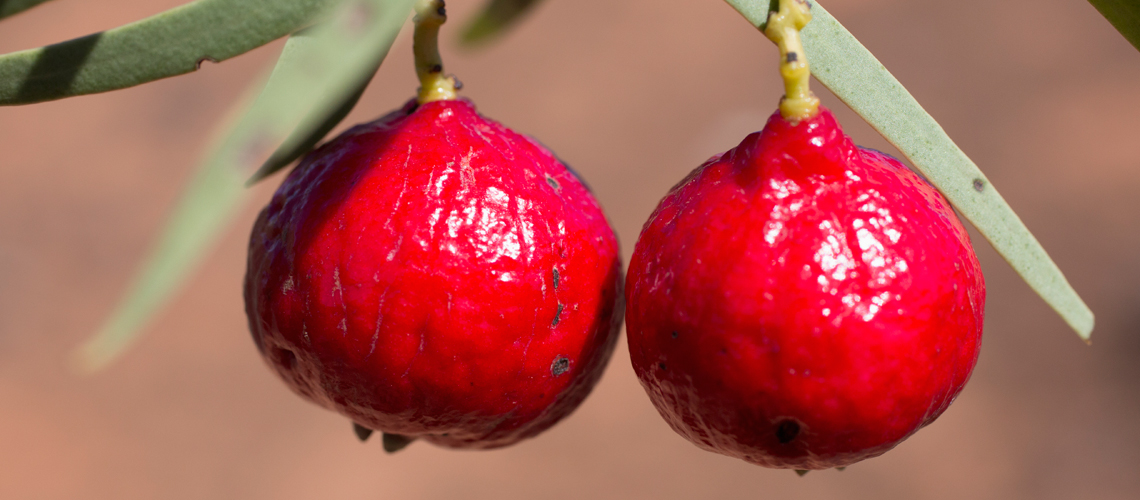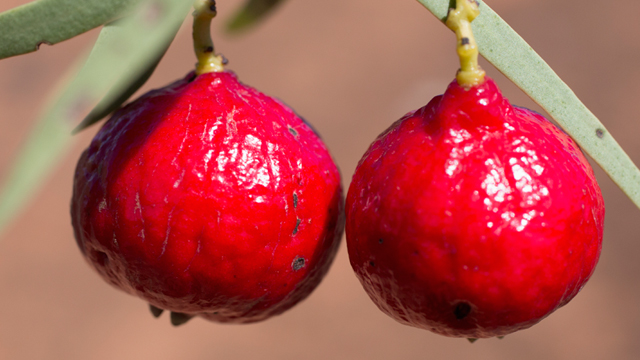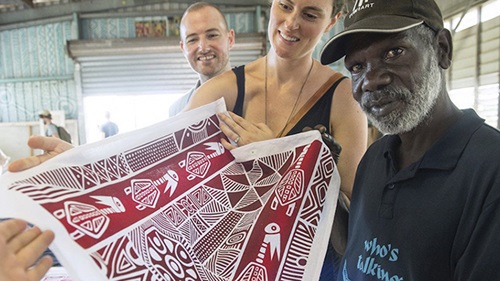If you haven’t explored Australian native bush foods you are missing out on some incredible flavours, textures and nutritional benefits and there is no better time to start exploring than now.
Australia is blessed with an abundance of wild herbs, vegetables, fruits, nuts and seeds. Our distinct geography and climate has produced a huge variety of foods with unique nutritional and flavour profiles, resulting in distinct and delicious flavours exclusive to Australia.
Most of us cook quite confidently with European and even Asian vegetables, fruits, herbs, spices, nuts and seeds. When it comes to Australian native ingredients many of us want to try but have no idea where to start. Consider this an introduction to Australian bush foods, hopefully by the end you will be ready to start tasting, cooking and learning more.
Wattle Seeds
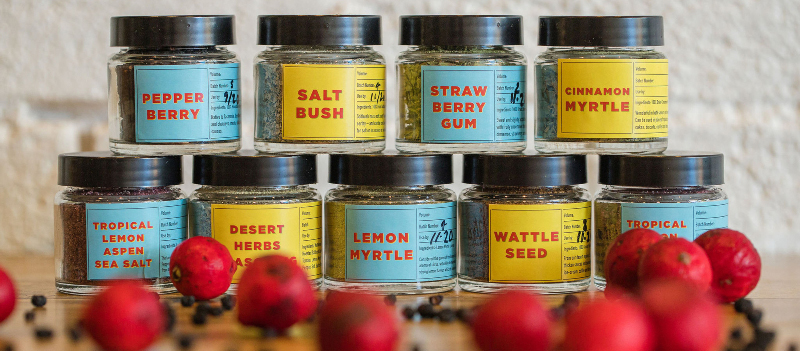
Image above: Native Australian dried herbs and flavours © Mabu Mabu
Harvested from wattle trees predominantly grown in South Australia in the Flinders Ranges region. The seeds mature and are picked in January, February and March. The wattle seeds are then typically roasted and can be ground or used whole. The wattle flowers (without stalks) can also be used in pancakes, scones and scrambled eggs or omelettes.
Wattle seeds have a smooth nutty, coffee and chocolaty flavour and can be used in baking, desserts, sauces and taste divine added to coffee or chai. They are also high in protein and essential nutrients potassium, calcium, iron and zinc. These little seeds pack a powerful punch!
Why not try:
Ground Wattle Seeds from Mabu Mabu
Wild Chai Latte from Warndu
Wattle Seed Hot Chocolate from Mabu Mabu
Wattle Seed Sprinkle from Warndu
Finger Lime
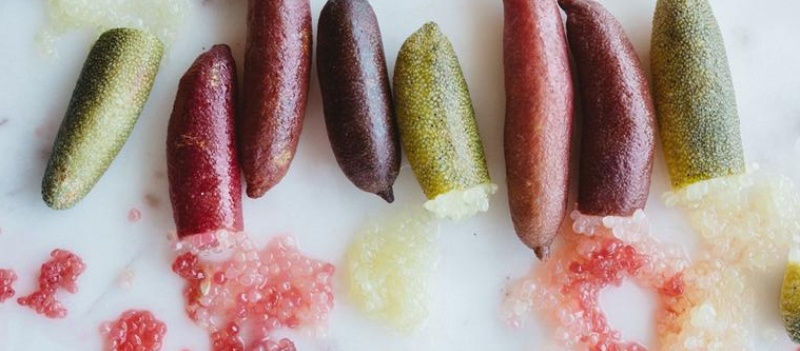
Image above: Australian finger limes by Luisa Brimble, © Warndu Mai
Zesty and citrus sweet, finger limes are grown in northern New South Wales and southern east Queensland. They are fresh between March and May but can be dried and used later. The fruit is roughly the size of your little finger and ranges in colour from green through to ruby red.
While the flavour can be compared to a traditional lime, fingers limes are actually slightly lighter and sweeter in flavour. The fruit has tiny ‘caviar pearls’ of flesh prized by chefs worldwide. It can be used in a variety of ways, from topping ceviche and oysters, to salads and cocktails.
Why not try
Dried Finger Lime from Warndu
Finger Lime Dark Chocolate by Jala Jala Treats
Finger Lime and Native Mint Tea by Warndu
Dark Chocolate and Rainforest Lime by Chocolate on Purpose
Davidson Plum
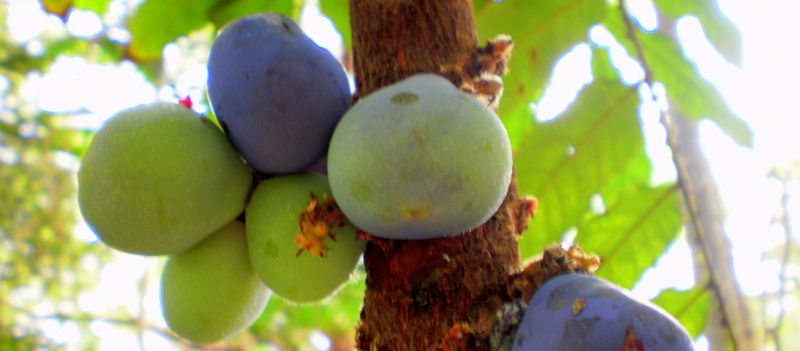
Pictured above: Davidonia jerseyana, a variety of Davidson plum, grows in Nimbin, New South Wales. Photograph: John Moss /Wiki Commons Photograph: John Moss /Wiki Commons
Sweet and juicy Davidson Plum is a variety of native plum. These deep, dark purple fruits have soft juicy pulp with a citrus bite at the end. The flavour is reminiscent of stewed rhubarb and the plums are a versatile addition to jams, desserts and sauces.
They are wild harvested and farmed in the rainforests of northern New South Wales and southern Queensland, with the New South Wales fruit ripe in summer and Queensland in winter. They also have wonderful nutritional properties; they are high in antioxidants and calcium as well as vitamin E and zinc.
Why not try
Dried Davidson Plum by Warndu
Davidson Plum and Lemon Myrtle Tea by Warndu
Davidson Plum Chocolate by Chocolate on Purpose
Davidson Plum White Chocolate by Jala Jala Treats
Pepperberry
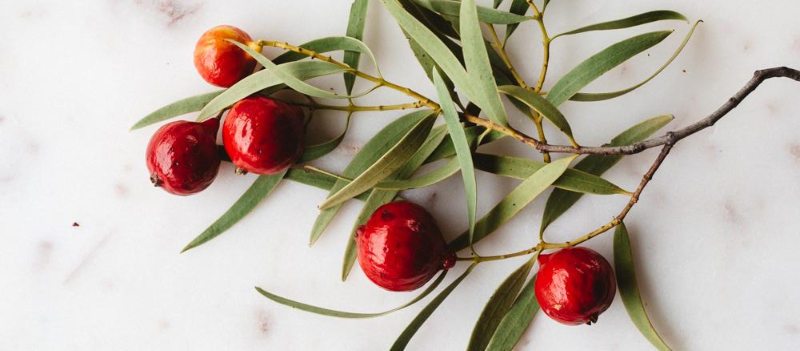
Image above: Pepperberries by Luisa Brimble, © Warndu Mai
Pepperberries are literally the Australian version of pepper, they have a similar spice and heat but also offer a slight fruity sweetness.
Pepperberries grow in the alpine regions of Tasmania and southeast mainland Australia and the fruit ripens between March and late June. They are an easy starting point with native foods simply substitute for your regular pepper and use everyday!
Why not try
Wild Chai Latte from Warndu
Dried Whole Pepper Berry from Warndu
Dark Chocolate with Wild Rosella & Mountain Pepperberry by Chocolate on Purpose
Salt Bush
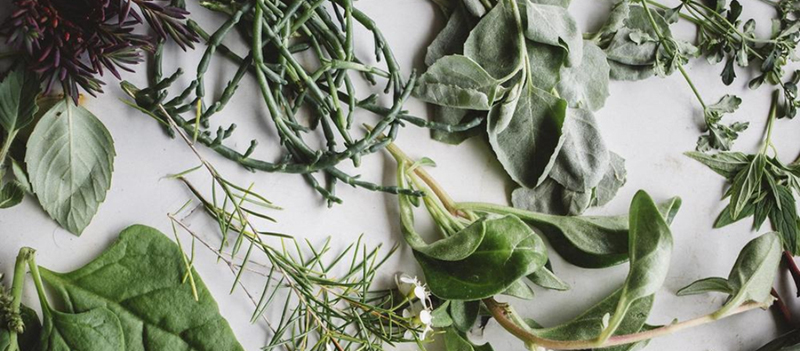
Australian Native Herbs, vegetables and edible plants © Warndu Mai – Image: Luisa Brimble
We all know you can’t have pepper without salt and salt bush is pepper berries natural companion in the spice rack and on the dinner table. It can be eaten fresh but is best dried and ground.
Salt bush grows widely across all parts of mainland Australia and is rich in protein, antioxidants and minerals, with 20 per cent less sodium than traditional salt. Use it in your everyday meals or try baking with it. Salt Bush is delicious in breads and pies and can even be baked into healthier crispy chips.
Why not try
Dried Salt Bush from Mabu Mabu
Salt & Pepper (Murray River Pink Salt, Native Pepper and Saltbush) by Warndu
Dried and Ground Salt Bush from Warndu
Lemon Myrtle
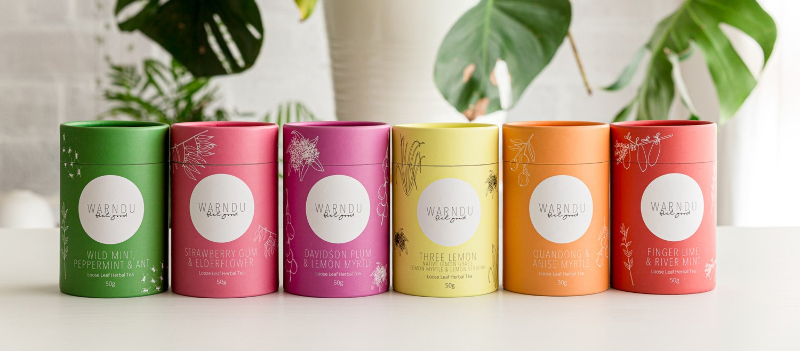
Image above: First Nation Herbal Teas by © Warndu Pty LTD
Lemon Myrtle may be one of the best-known Australian bush foods and is more lemony than lemon! Grown widely across temperate Australia the leaves of the lemon myrtle are harvested all year round. Typically available either as an oil or as dried whole leaves, lemon myrtle produces a strong citrus aroma of lemon grass, lemon and lime oil.
The powerful citrus scent and flavour is because Lemon Myrtle leaves are the purest source of natural citral, the leaves are 90-98% citral, which creates the aromatic flavour explosion.
It is also an incredibly versatile ingredient, dilute the highly-concentrated Lemon Myrtle oil in vegetable oil and use in cooking meat and fish or drizzled over salads and soups. Dried it is great in teas, sweet and savoury baked goods, desserts and makes the best lemon butter!
Why not try
Davidson Plum and Lemon Myrtle Tea by Warndu
Wild Chai Latte from Warndu
Australian Native Three Lemon Tea by Warndu
Lemon Myrtle White Chocolate by Jala Jala Treats
Lemon Myrtle Tea by Indigiearth
Bush Tomato
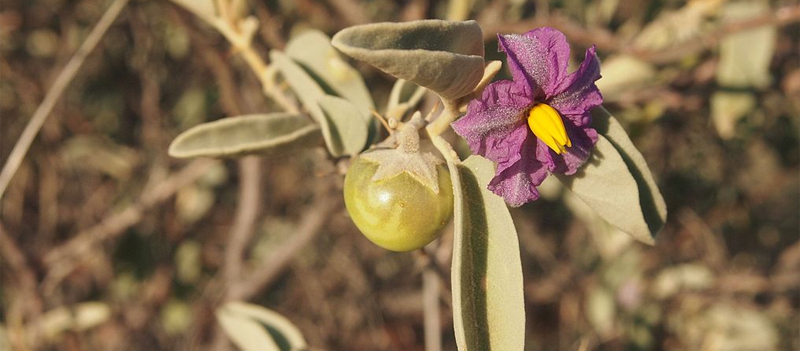
Solanum lithophilum - Bust Tomato flower and fruit by Mark Marathon from WikiCommons
Bush tomato or Desert Raisin are a salty sweet delight. Most commonly wild harvested in central Australia in Autumn and Winter but the increase in demand for these desert gems is seeing them now farmed.
As the name suggests they are a native Australian tomato but have a spicy, tamarillo and caramel flavour and are peanut sized. The fruit is generally dried and is a lovely addition to meat rubs and savoury treats such as meat pies.
Reconstituted add Bush Tomato to chutneys, sauces and stews for a rich spicy flavour. High in antioxidants, minerals, protein and fat; bush tomatoes are considered one of the most nutritionally important Central Australian bush foods.
Why not try
Whole Dried Bush Tomatoes by Warndu
Bush Tomato and Macadamia Dukkah
Quandong
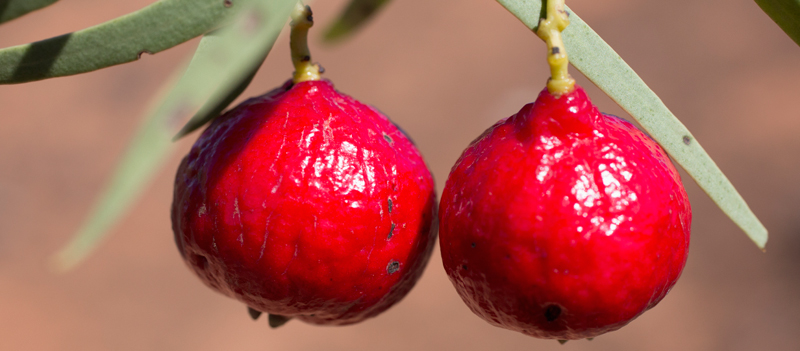
Close-up of quandong hanging on plant outdoors by Tobias Titz from Getty Images
Why not try
Quandong and Milk Chocolate covered Macadamias by Indigiearth
Dried Quandong by Warndu
Quandong and Anis Myrtle Tea by Warndu
Quandong and Macadamia Chocolate by Chocolate on Purpose
Quandong and Black Tea by Warndu
Native Thyme
Why not try
Native Thyme Olive Oil by Warndu Dried Native Thyme by Warndu
Get cooking!

© Warndu Mai – Image: Luisa Brimble
So start exploring and experimenting with Australian bush foods. Get in the kitchen and try adding a few of these to your favourite recipes, add pepperberries and salt bush to your everyday condiments or simply try one of our many delicious ready- made bush food sauces, chocolates, oils, bars or teas. Discover delicious and decolonize your palate!
Shop Welcome To Country's food range to explore more Native Australian culinary delights!
This piece was made in partnership with Welcome to Country, your guide to experiencing Aboriginal & Torres Strait Islander Australia.







